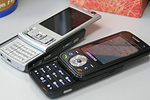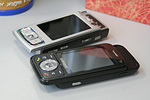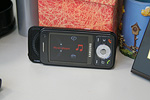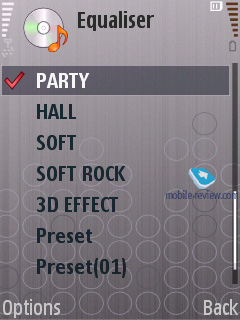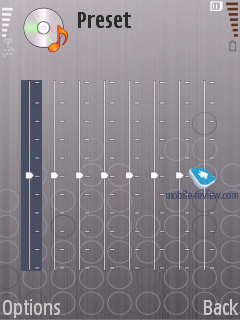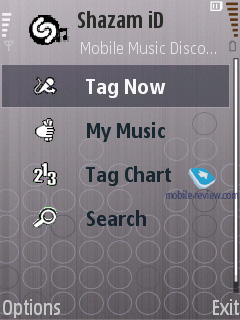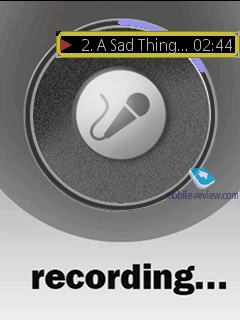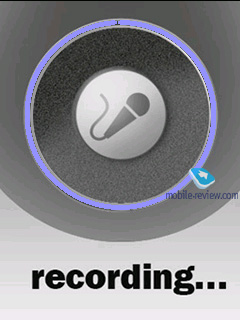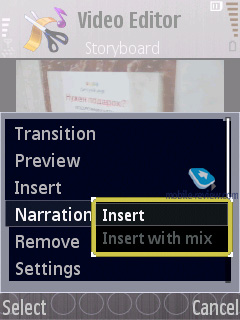|
|
Review of GSM/UMTS-smartphone Samsung i450
Live photos of Samsung i450
Table of content:
- Positioning
- Design, size, controls
- Keypad
- Display
- Hardware platform
- Performance
- Memory, memory expansion
- USB, Bluetooth
- Battery
- Music department
- Camera
- Video editor
- Preinstalled applications
- Competition
- Impressions
Sales package:
- Handset
- Battery
- Charger
- Wired stereo-headset
- User Guide
- USB data cable
- 1 Gb microSD memory card (varies by region)
Positioning
In the range of music-inclined devices, also known as Beatz or Ultra Music, this is the top-of-the-line offering both quality- and price-wise. That’s where we come across a phenomenon when the line-up’s bottom end is represented by the Samsung F210, a handset styled after an MP3 player-pendant, the mid-range solution, which the Samsung F330 actually is, comes in the form of a conventional slider, and the Samsung i450 boasts dual-slider action. Probably the first thing you set your eyes on here is the difference in indexes, however the explanation is pretty simple – the maker follows this own classification and sorts its solutions into families with only functionality in mind. This means, Samsung doesn’t opt for a consistent development line, its offerings share absolutely nothing, no generic suit of features or design. The reason being that it was only recently when Samsung got successful with its coherent device families, and this concept is only about to penetrate the maker’s range. The first style-keyed line-up (carrying on the heritage of the Ultra II family) with its members sporting identical feature packs, yet coming in different form-factors will hit the streets in summer 2008.

That’s why when dealing with the Beatz range from Samsung you should examine every model separately from others – they really have very few things in common and differ in almost every single respect. For instance, the Samsung i450 is a Symbian smartphone, which puts it in one boat with Nokia-branded offerings. While this S60 3rd edition FP1 solution was in the works, Samsung tried to give it a lot of characteristic touches so as to set it apart from Nokia’s handsets.
Within Samsung’s portfolio the i450 is neither a top-of-the-line nor the key smartphone offering. Low index, reasonable price tag – it would seem this phone is bound to pass unnoticed. However music-wise, this is the finest mass-market product from the company and its true music-inclined flagship (discounting the B&O Serenata). Looking at the segment of music playing phones, the Samsung’s solution has a very good chance to end up on the top of all charts. We won’t elaborate on this just yet though – read further to find out our breakdown on the i450’s competition.
Back to the table of contents >>>
Design, size, controls
The i450 is definitely not the most petite handset around at 101x52x17.8 mm, weighing in at 110 grams. Nevertheless, compared with the Samsung F330 or the Sony Ericsson W910i it doesn’t look this huge – probably its profile could drop a couple of millimeters, but otherwise it is pretty much convenient phone. And as against Nokia-branded S60-powered handsets, the i450 is a clear winner with its comparable or even more diminutive dimensions.
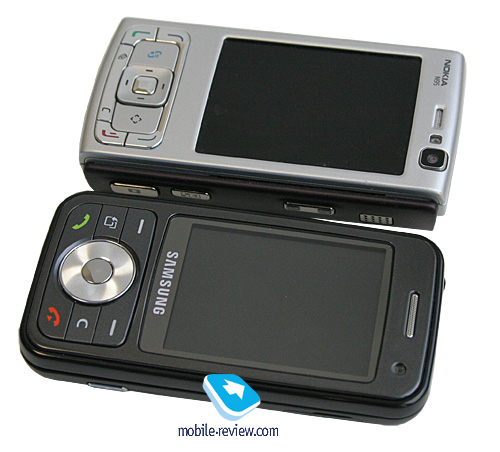
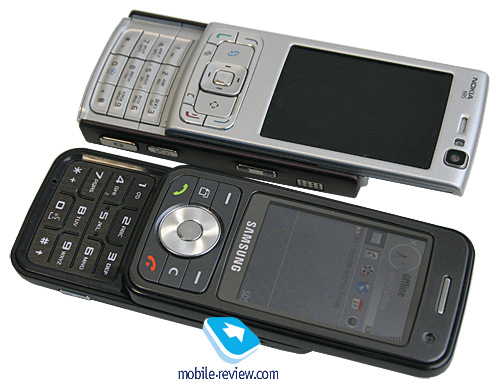
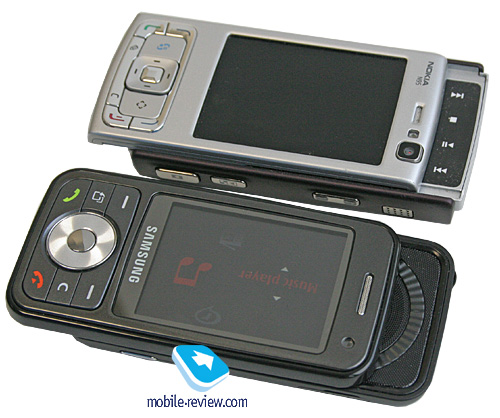
The choice of colors the i450 comes in is somewhat poor – there are only black (the front and the rear sport glossy plastic, which is prone to fingerprints, although you they won’t really bother you) and white (with dark-blue accents on the sides) editions available. Also, some images of the i450 feature the white trim with red accents, but this color scheme will ship only to select markets and will never go global.
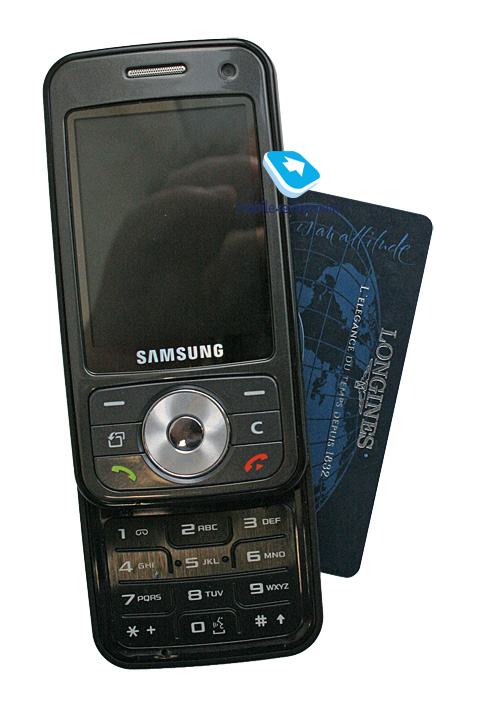
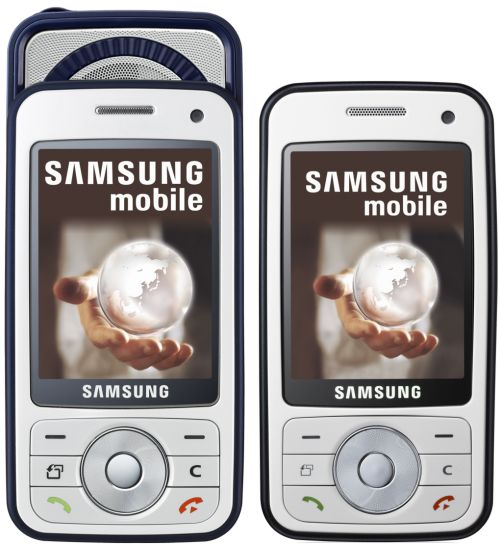
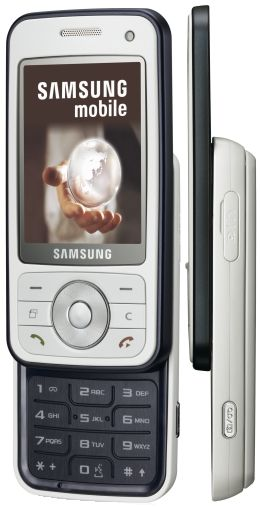
The i450 sports dual-slider action, meaning that it can slide up like any normal slider-type phone, and you can also pull the top half upwards to reveal a touch-sensitive pad and speakers. In the latter case you get right into the music mode, which is pretty obvious, so the display mode switches to landscape automatically.
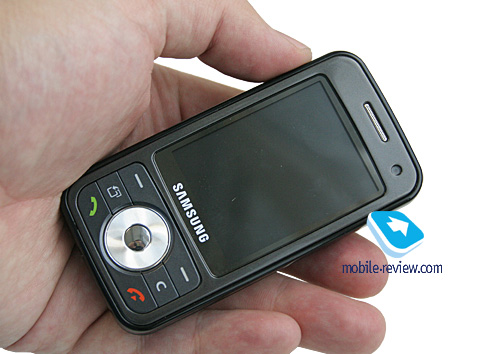
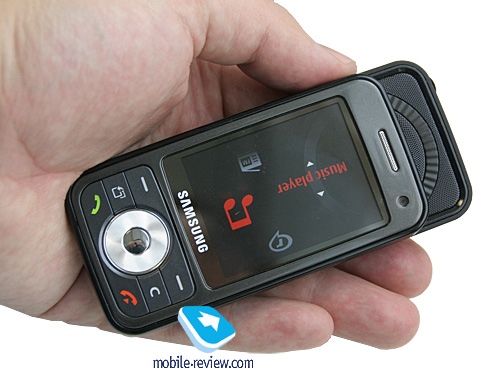
The top end rooms a power button alongside a 3,5 mm headset jack covered by a plastic flap that is linked up with the casing. Also sitting on the upper edge are a grill-covered loudspeaker and a lanyard eyelet.
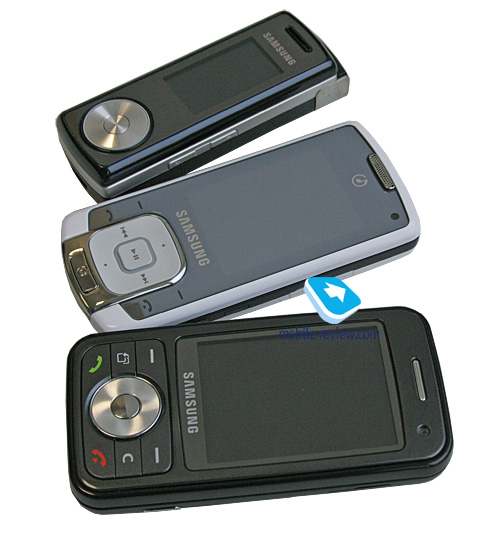
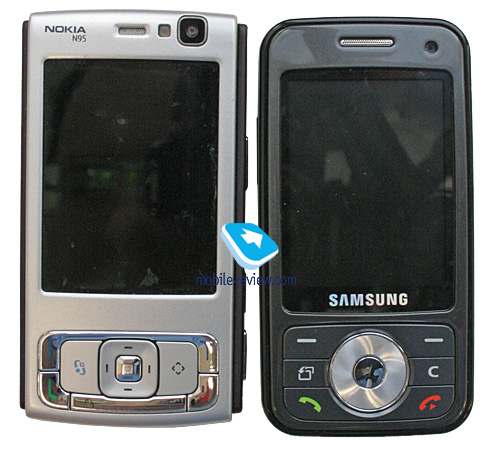
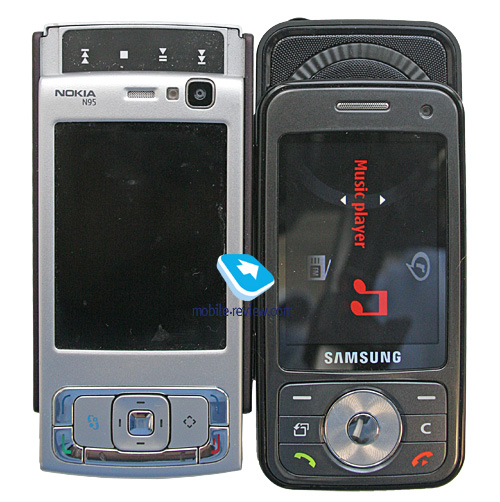
The interface port is now mounted on the right side – this is a new type, which has already become par for the course for Samsung. What’s interesting about it, is that the user can plug an original headset into this socket and get the same sound quality as if he opted for the 3,5 mm audio jack. In a certain way this is a unique solution given the fact that other makers dump proprietary slots for audio accessories as soon as they embed a 3,5 mm audio jacks on their phones.
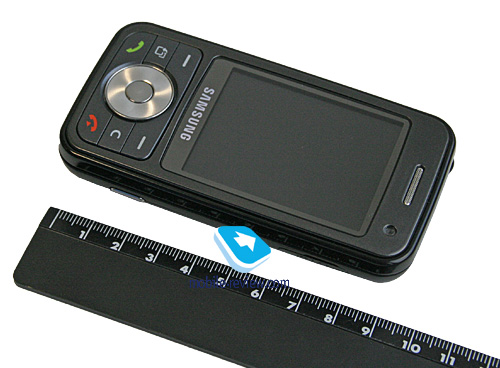
The right-hand side features a dedicated camera button, while the opposite spine hosts a volume rocker and a microSD memory expansion slot.

The i450 enjoys a spring-loaded mechanism for a feather-light slider action. Topping the display is a forward-facing VGA-camera essential for video calls within 3G networks.

The underside of the phone holds a flash and a 2 Mpix camera lens.
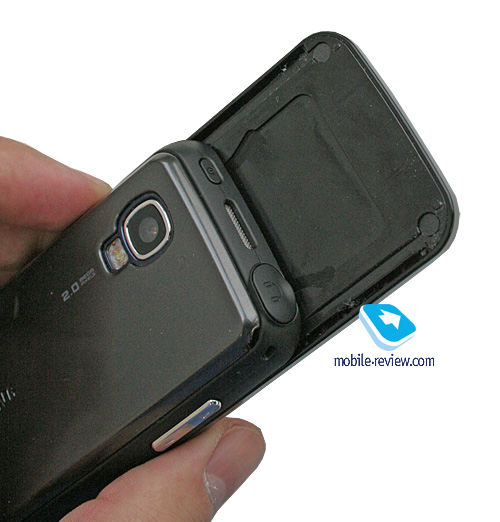
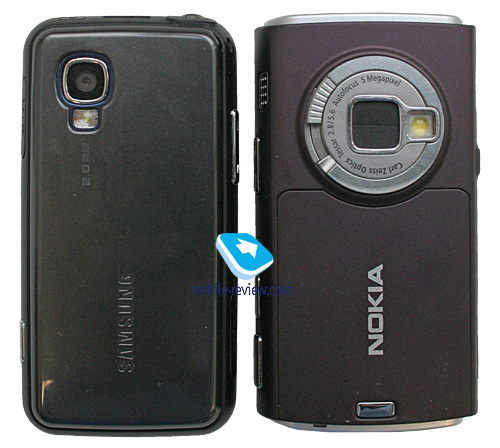
Back to the table of contents >>>
Keypad
The navigation cluster is a joy to use with its relatively big buttons. The navigation key is covered in a distinctive metal texture.
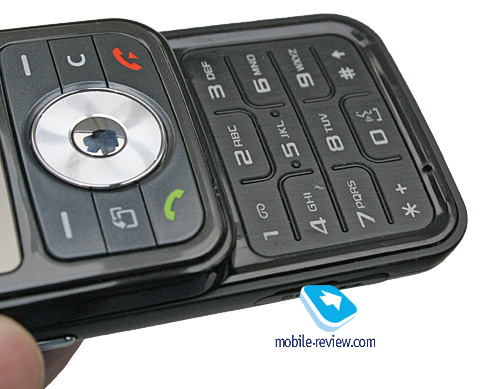
The number keys sit on one plastic slab and ensure moderate travel, yet don’t feel fiddly to use or something. All buttons are lit in white, which makes them visible in various environments. The i450’s microphone is housed at the foot of the keypad.
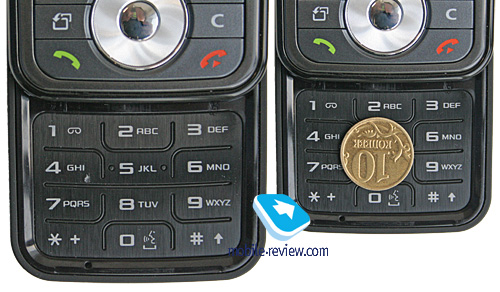

Back to the table of contents >>>
Äèñïëåé
The Samsung i450 utilizes a 2.4-inch TFT matrix showing off a resolution of 240x320 pixels (37x49 mm). The display is capable of 262 K colors, putting up a vibrant and juicy picture. Faced off against the Nokia N95, the i450 is a clear winner thanks to its increased brightness and better color reproduction. While it gets washed out in the sun, the handset’s display remains fully legible.


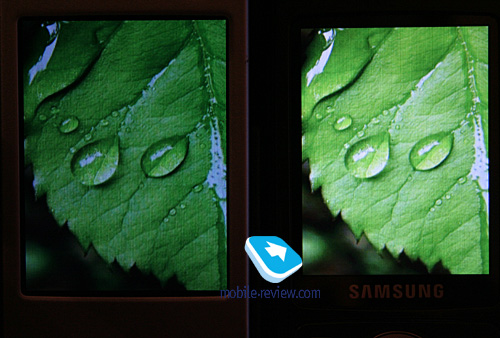
The i450’s screen can accommodate up to 12 text and 3 service lines, however even with the standard font settings on, it can hold up to 16 text lines in certain modes.
Back to the table of contents >>>
Hardware platform
One of the first things drawing attention to the i450 is how unlike Nokia-branded S60-powered offerings it actually is. Since Samsung is free to pick whatever solution it sees fit, the i450 turns out to be different from any other device running on S60. It is right on the surface – the i450’s radio interface is built on the Qualcomm MSM6260 chipset, whereas Nokia doesn’t seem to employ it in its solutions.
What is interesting, the multimedia features and the operating system are powered by the TI OMAP 2431, the second generation of this type. Notable for its lack of a dedicated 2D/3D accelerator (available with the OMAP 2430), it still packs pretty decent audio and video departments. This very solution is very easy to tweak and attune, so it will makes its way to other phones as well, make no mistake about that. What is more, this is not a steep solution. As for Nokia, it will be switching to this chipset in its 2008 models so as to replace the OMAP 2420. But don’t think it will get reserved spots in every single phone in light of the fact that the OMAP 2420 is a single-CPU chipset, which automatically makes for less power hungry solutions and definitely there some more benefits to it. Among OMAP 2431’s other features of note is the support for touch-sensitive displays.
Two stand-alone chipsets employed for the smartphone department of the i450 and its wireless module have brought about a queer phenomenon, when the handset’s memory is divided up into two separate blocks. Technically, it won’t be much of a mistake to say that the i450 packs RAM for its wireless module and the smartphone front. The latter department enjoys 32 Mb, while the former packs 64 Mb, both are SRAM type.
The flash-memory volume found in the i450 makes 128 Mb and 64 Mb respectively (both NAND), while the user has around 50 Mb for personal data. The CPU runs at 330 MHz (ARM 1136).
Finally, the IceMobile amplifier handles sound in the i450 (works for headphones only, the sound you get from the speakers is finalized by the TI’s built-in processor). So it turns out the i450 is only a deeply integrated solution, but it doesn’t really need this. Among the letdowns of this approach is slightly greater space requirements for all these components, and a more power-hungry system overall (as against single-CPU systems). Nevertheless, dedicated components substantially boost the device’s performance, at least in theory.
Back to the table of contents >>>
Performance
The most exciting thing about the i450 performance was finding out how it stood against the Nokia N95. It turned out to be faster in some tests and pretty much comparable in others, so by and large these two handsets are pretty much comparable when it comes to performance. However, we didn’t really need these benchmark tests to see that.
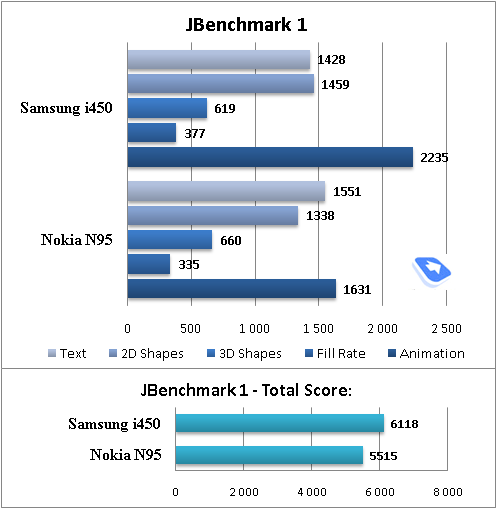
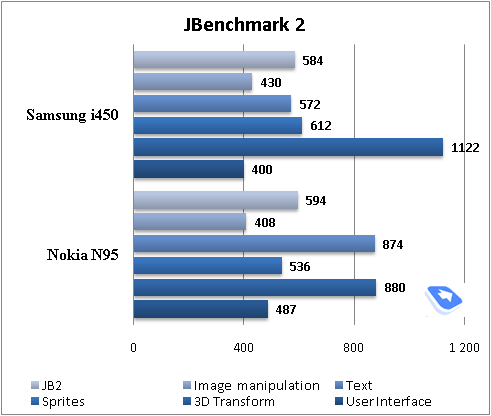
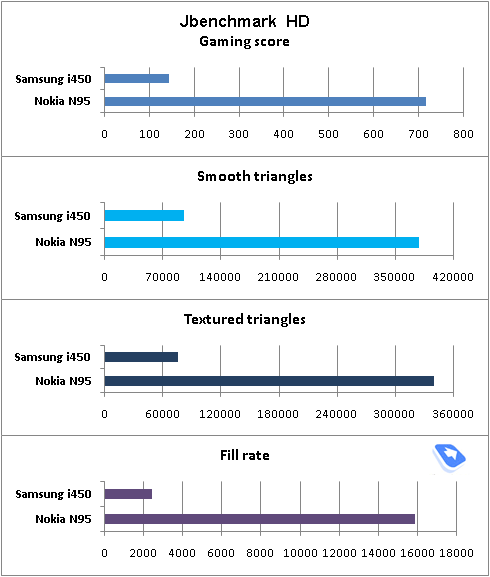
Back to the table of contents >>>
Memory, memory expansion
The phone comes with around 50 Mb of user-manageable flash memory, the RAM volume makes 64 Mb. The i450 deals with up to 2 Gb microSD memory cards (hot-swappable), however we had no problems managing a 4 Gb unit with our i450.
Back to the table of contents >>>
USB, Bluetooth
USB. The handset comes in with USB 2.0 support, upon a successful PC connection you can choose one of the following modes:
- Data Transfer (Mass Storage USB) – memory cards is available, no drivers required, as your OS identifies the handset automatically. Data transfer speed makes around 2000 Kb/s (USB 2.0).
- PC Suite – used for device management via PC Suite, enables all features of the phone, data backup etc.
- PictBrigde – serves for printing images and photos.
- Media Player (MTP protocol) – synchronizes data with Windows Media Player.
Bluetooth. The smartphone sports EDR-enabled Bluetooth 2.0 alongside the following profiles:
- A2DP
- AVCRP
- BIP-ImagePush
- DUN-GW
- FT-Server
- HandsFree-AG (1.0)
- Headset-AG
- OBEX
- OPP-Client
- OPP-Server
- SIM Access-Server
The top speed you can get with the N81’s Bluetooth connection is around 100 Kb/s. We also tested its A2DP profile in pair with the Sony Ericsson DS970 headset, which worked just fine – we managed our play list, skipped within tracks and adjusted volume seamlessly, however we couldn’t make current track’s title show up on the i450’s display.
Back to the table of contents >>>
Battery
In view of the abovementioned reasons, the i450 comes bundled with a higher-capacity cell – a 1140 mAh Li-Ion battery. The phone has a rated battery life of 210 hours standby and up to 2,5 hours talktime. In Moscow the Samsung i450 stayed up and running for around 2 days at 5-6 hours of music and a total of one hour of calls. We weren’t heavy on its other features. Compared with the Nokia N81, the i450 lasts a tad less in a similar usage mode. But this gap is not really vital, and many might well overlook it. And given that it easily stays online for two days, most consumers will be just happy with it.
The i450 gave us 8,5 hours of continuous music k (bundled earphones, top volume settings) from a full charge
Back to the table of contents >>>
Music department
On the face of it, the i450 doesn’t appear to be a music-heavy phone with its conventional design and no real cues indicating the phone’s true abilities. But the truth is, all these goods come to the surface when you switch into the music mode by pushing the upper slide down to unveil the semi-circle of the Touch Wheel touch-sensitive pad, and two stereo-speakers mounted under the grill, which is not something we have used to see – other makers usually opt for side-mounted speakers.
The same design is employed in another phone – the Samsung Serenata co-created with B&O. Actually, these two seemed somewhat similar in this sense.
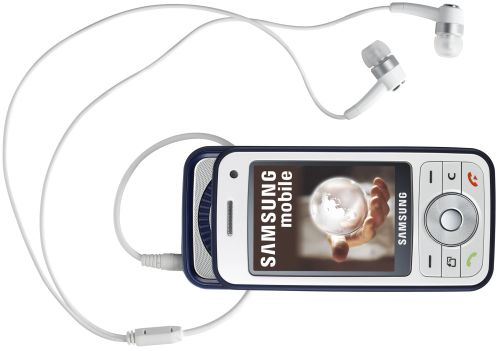
Moving on to the question that doesn’t let music aficionados sleep well – whether they can plug in a pair of custom earphones. Yes, you can do that with the i450, all thanks to its 3,5 mm audio jack placed right on its casing. The bundled headset also houses a microphone for calls, but since it doesn’t enjoy a modular design, there is no way to attach your headphones to it, which is a pretty crucial drawback, since normally we want to have both our tunes and calling features at hand, and as a rule earphones don’t come with microphones onboard. So it would be really great to have the i450 packaged with a headset having a 3,5 mm audio adapter on it.
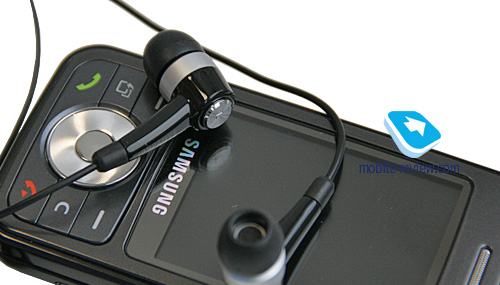
On the other hand, the i450 will have nothing against all other headsets bundled with the same interface connection, as well as the accessories compatible with the Samsung G600 and the Samsung G800. This means you always can get one of these and use your own pair of earphones without hurting the handset’s audio quality.
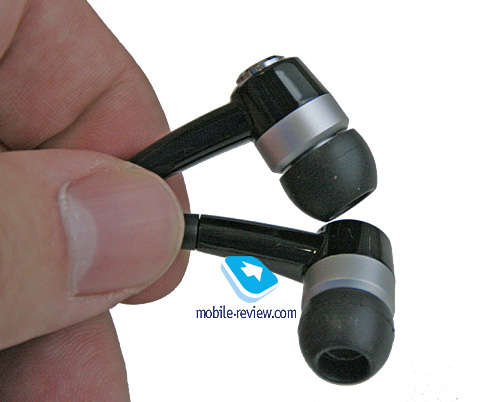
The i450 also utilizes the B&O’s IceMobile amplifier, which automatically puts it in one row with most latest and greatest Samsung-branded offerings – both those positioned as music-minded solutions and no-frills devices.
Anticipating the conclusion found in the section of the sonic experience delivered by the i450, I shall say that I found this phone’s sound quality to be pretty decent, and definitely not worse than that of a stand-alone music player. Also, I faced it off against the Apple iPhone and didn’t really notice any tremendous differences in this department; furthermore, the Samsung’s solution would outdo the iPhone pretty often, so in my opinion, this is one of the market’s best music-inclined offerings as far as music quality is concerned. This thesis has also been proven by our battery of tests.
Alexander Dembovsky’s take on the i450:
The i450 is a good performer both in our empirical and subjective tests. Although it may sound strange, it is not a rare occasion when these two categories don’t seem to correlate - RMAA tests can well spoil a good subjective impression of several music sessions, nevertheless, it is not the case with the i450. The output signal strength is pretty much okay, as it will prove sufficient for all earbud-style earphones and most light over the head units available – in this sense, the i450 is more like a stand-alone audio-player.
Its Frequency Response diagram shows a little dip in the area of lows, but it is easy to overcome with the help of equalizers. Apart from that, the i450’s sound is smooth and clear. The Noise level is quite decent, being pretty low and in line with most popular audio players.
General performance
| Frequency response (from 40 Hz to 15 kHz), dB: |
+0.41, -1.38 | Average |
| Noise level, dB (A): |
-85.4 | Good |
| Dynamic range, dB (A): |
84.4 | Good |
| THD, %: |
0.0024 | Excellent |
| IMD, %: |
0.032 | Good |
| Stereo crosstalk, dB: |
-87.7 | Excellent |
| Intermodulation at 10 kHz, %: |
0.028 | Good |
General performance: Good
Frequency response

Noise level

Having armed its device with decent sound, Samsung, however, hasn’t put some extra frills into it. The player found in the phone mode will seem familiar to many from the previous generation of Nokia’s products. Its only difference concerns the fact that jumping between tracks and fast forward is done by pressing the navigation key up and down, while the volume level can be adjusted by pushing the up and down buttons. Obviously, this is not the most logical way to do these things in your player, and even Nokia now makes use of a different layout in its today’s offerings.
The player supports Album Art – thumbnails are displayed for albums and particular tracks. Progressive fast forward feature is available with the i450 as well.
Equalizers. The sound quality changes dramatically every time you enable one of these 8-band equalizers (15 presets: Rock, Jazz, Live, Classic, Bass, Bass&Treble, Dance, Pop, Treble, Club, Party, Hall, Soft, Soft Rock, 3D Effect). While these presets cannot be edited, you can make up some custom settings (as many as you want, but I doubt you will need more than two).
Such settings as Stereo Widening, Loudness and Channel balance, common to Nokia’s S60-powered phones are absent from the i450.
The handset has random and repeat (all or one track) playback modes onboard. While at the standby screen the display is filled up with data on currently playing song.
Calling up the Music Menu allows you to browse all tracks, playlists, sort the library by artists, albums, genres and composers. The music library (or the track list) gets updated automatically on every successful synchronization attempt with a desktop via PC Suite, and in case you use a memory card with pre-loaded tracks, this won’t happen. Among all other things, we must note the Library Details feature.
Tags are supported in the UTF-8 encoding, supported audio formats - MP3, AAC, AAC+, AAC+e, Real, WMA.
As soon as you get into the Multimedia menu, the player flips to the landscape mode. Basically, it features the same options as the standard player, yet sports a completely different interface. Employing the Touch Wheel you can scroll though lists and clicking on it will select an item.

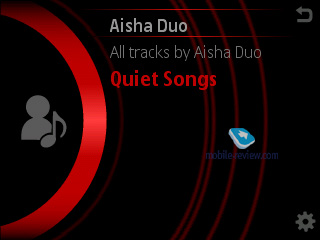
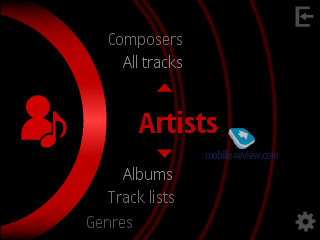
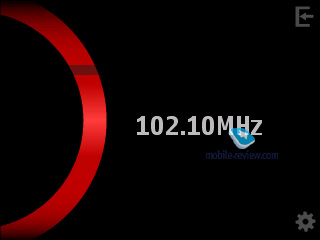
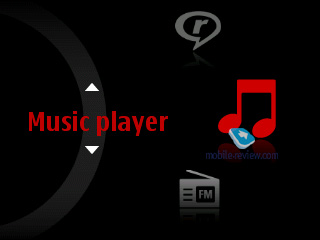

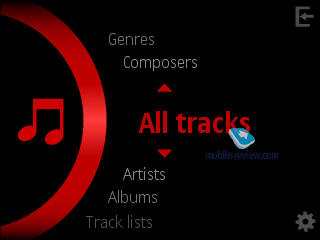
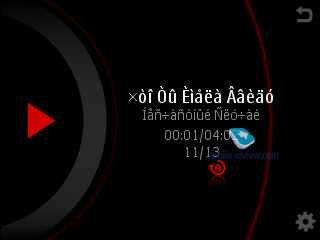


While it seems very resembling to the Nokia N95’s menu philosophy-wise, the i450 comes with a different implementation onboard. There are only three items available over these: Music, FM-radio and Real Player (supported formats - MPEG4, H.263, Real, H.264, WMV). One of the amenities here is that the semi-circle of the touch-pad on the handset’s casing gets completed right on the display.
On balance, the i450’s music department is a mixed bag – in terms of its sonic experience it is second to none on the market, but its feature pack and the settings pool on offer are pretty much basic and can’t compare with those of Walkman or XpressMusic.
FM radio – this application sports a standard interface, with an ability to save up to 20 stations. When tested in the city, the radio performed well. No auto-tuning is available with the i450, so you will have to do it all manually

Shazam ID. This service is totally identical to Sony Ericsson’s very own TrackID, where you record a short clip of a radio broadcast or a track stored on your phone, then this application connets to a server and tries to identify it. Unlike TrackID, Samsung's service includes a chart where you can find all most popular requests. Also you can search for similarly sounding tracks, but this will also require an Internet connection.
Generally, this application is by no means a breakthrough, on top of that it has a crucial drawback to it – it is not integrated into the player, so you will need to launch it separately.
Exclusively for the Russian market, the number of tracks in the database has been pushed up from 30 thousands to around 250 thousands. Anyway, this is what Samsung’s representatives promise to roll out in December.
Basing on our own experience, we are pretty confident that you will be able to identify pretty much any track broadcast on a typical radio station. However, when it comes to something more complicated than pop-music, you might well run into some difficulties.
Back to the table of contents >>>
Camera
The handset retains a 2 Mpix CMOS camera, whose quality, let’s be honest, it quite moderate (although comparable with the Nokia N81). When we were shooting in poor light conditions, all our snaps came out noisy, and the i450’s LED flash wasn’t much of a help.

The camera settings aren’t stellar either – there is a self-time, brightness adjustment, white balance (auto, sunny, clody, Incandescent, Fluorescent) and some overlays (Normal, Sepia, Black&White, Negative, Aqua).
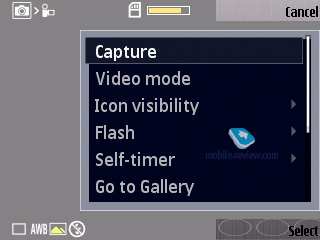

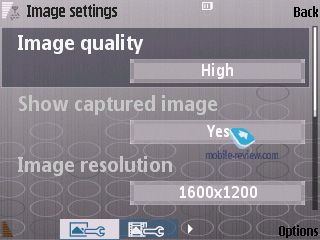
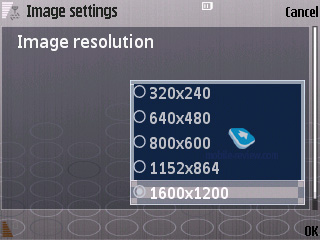
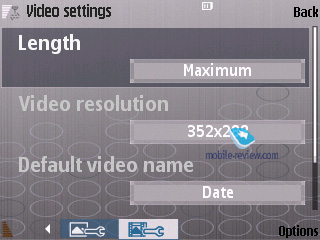
 |
 |
| (+) maximize, 1600õ1200, JPEG |
(+) maximize, 1600õ1200, JPEG |
 |
 |
| (+) maximize, 1600õ1200, JPEG |
(+) maximize, 1600õ1200, JPEG |
 |
 |
| (+) maximize, 1600õ1200, JPEG |
(+) maximize, 1600õ1200, JPEG |
 |
 |
| (+) maximize, 1200õ1600, JPEG |
(+) maximize, 1600õ1200, JPEG |
 |
 |
| (+) maximize, 1600õ1200, JPEG |
(+) maximize, 1600õ1200, JPEG |
 |
 |
| (+) maximize, 1600õ1200, JPEG |
(+) maximize, 1600õ1200, JPEG |
 |
 |
| (+) maximize, 1600õ1200, JPEG |
(+) maximize, 1600õ1200, JPEG |
 |
 |
| (+) maximize, 1200õ1600, JPEG |
(+) maximize, 1200õ1600, JPEG |
 |
 |
| (+) maximize, 1600õ1200, JPEG |
(+) maximize, 1600õ1200, JPEG |
 |
 |
| (+) maximize, 1600õ1200, JPEG |
(+) maximize, 1600õ1200, JPEG |
 |
 |
| (+) maximize, 1600õ1200, JPEG |
(+) maximize, 1600õ1200, JPEG |
 |
 |
| (+) maximize, 1600õ1200, JPEG |
(+) maximize, 1600õ1200, JPEG |
 |
 |
| (+) maximize, 1600õ1200, JPEG |
(+) maximize, 1600õ1200, JPEG |
 |
 |
| (+) maximize, 1600õ1200, JPEG |
(+) maximize, 1600õ1200, JPEG |
Video. You can capture video in two resolutions – 352x288 and 176x144 pixels at 15 FPS (sound may be disabled). The quality you get with the i450 is not mind-blowing, basically your clips will look fine on the phone’s display, but won’t be as good on a PC screen.
Video sample 1 (mp4, 2,13 mb)
Video sample 2 (mp4, 2,31 mb)
Back to the table of contents >>>
Video editor
Another application that goes beyond the standard suite of features found in Nokia’s S60-based phones. There are three modes available with this Video editor – the first and the least sophisticated one allows you to edit video clips (clip length, start time, sound track, sound recording etc).
The second mode is more a valuable addition to the default functionality of the system. With a bunch of photos on your hands, you can create a CIF, QVGA or QCIF clip. In a word, you pick all photos you will need, set the background music and then tweak transition effects. There is a multitude of options available in this mode, but it doesn’t get too complicated – on the contrary, everything is pretty intuitive. Naturally, you will need some skills and taste for this, but it’s worth your time. And this is by no means a replacement for the slide-show mode, you just get a short video that can be shared right away.
The last mode you can find in this Video editor is ‘StoryBoard’, that is quite similar to the previous one, however here you can throw photos and video into your clip. All other settings have been left intact.
Back to the table of contents >>>
Preinstalled applications
The handset doesn’t come preinstalled with a host of applications. The standard suite includes Adobe PDF, QuickOffice for reading documents (you can edit them as soon as you buy the program’s full version).
Flash Player – allows opening flash clips outside the bundled browser, packed by the i450 as a stand-alone application
Voice Signal – a voice recognition package, one of the market’s finest as of today. While at the standby screen you can call up voice commands by tapping and holding “0”. With this application you can dial a number from your contact book, bring up some menu items and other commands. No prior voice training is required, the handset assumes your current menu language for the needs of this app. Compared with a similar app from Nokia, found in its smartphones, this package is well superior and on top that makes fewer mistakes when dialing a number.

Back to the table of contents >>>
Competition
Generally speaking, the i450 has no direct competition as of today, except for the Nokia N81 (the junior memory card-based model). These two have many options on their respective spec sheets in common, like price (360 Euro), OS version, and similarly sized memory cards shipping with them. Among Nokia’s trumps are the N-Gage functionality and a couple of demo games on board, plus Wi-Fi connectivity, while the Samsung’s offspring has only sound quality going for it. What will prevail? I have no idea – it all depends on every consumer’s particular needs.
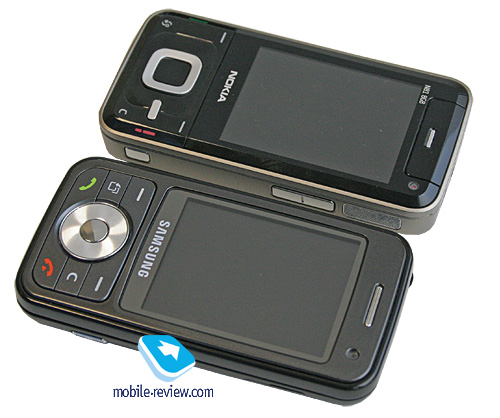
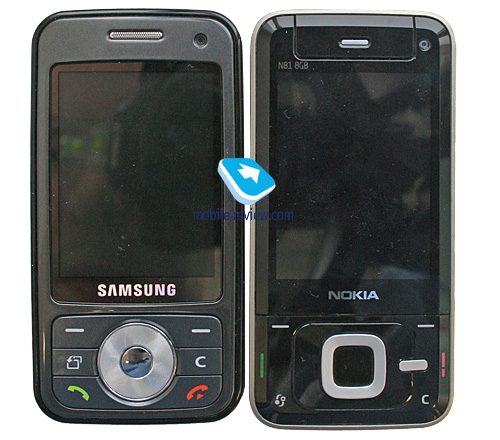
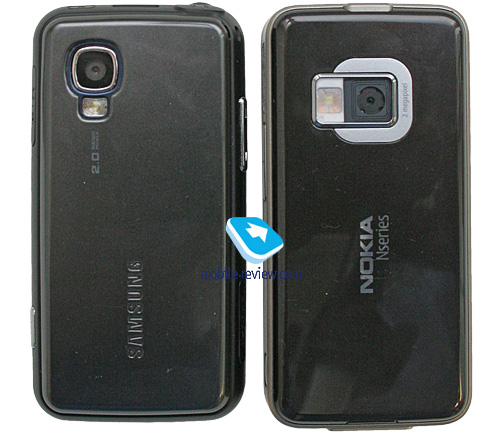
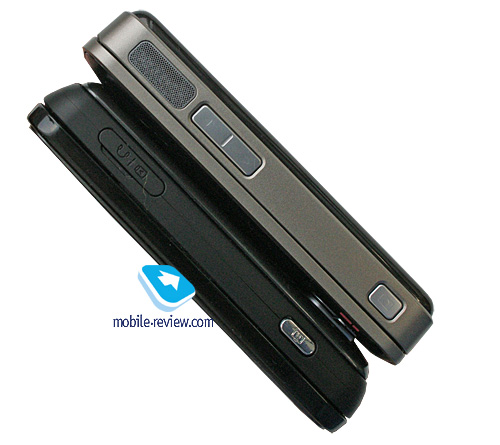
Discounting the difference between a ‘smartphone’ and a ‘feature phone’, we will find another offering to oppose the i450 – the Sony Ericsson W910i, a music flagship. While it lags behind the i450 sound quality wise, in the sense of software it is one of the most enticing solutions out there packing various playlists, SensMe functionality etc.
I think you are facing a tough decision what music slider to pick, there should be three options on your short list - Samsung i450, Sony Ericsson W910i and Nokia N81. Also, don’t forget the Samsung F330, but it is more of a direct rival to the Sony Ericsson W910i, albeit weaker on many fronts, that is why we’ve left it out here.
Back to the table of contents >>>
Impressions
The volume level produced by the loudspeaker is pretty high, being in line with those Nokia-branded smartphones equipped with stereo-speakers. We also liked the i450’s solid vibro alert. In terms of voice calls and microphone sensitivity, its performance is up to par, nothing that we would whine about.
The company isn’t trying to present this is a “do-it-all” solution or highlight some particular departments – all focus is on one feature alone, music. And it is a great thing, especially given the fact that the i450 is one of the market’s finest music playing offerings. Regrettably, it doesn’t pack a slew of music-related settings, which makes it somewhat dated in this sense. On the other hand it comes with all the essentials, and that’s exactly what many are craving for. As far as music quality is concerned, this smartphone is in fact the best thing you can get hold of these days. In my opinion, when put up against the Nokia N91, the Samsung i450 comes out on top in this battle of music departments. The same goes for the Samsung i450 vs Apple iPhone derby. But at the same time, a multitude of tiny details can get you thinking a lot. For instance, I don’t like the i450’s 10-point volume level bar, it would be better off with 20 scales on it, like Sony Ericsson and Nokia do these days. Digging deeper, some applications found in the i450 are poorly integrated with their primary functions; its radio is also pretty unsophisticated.
As a juke box, specifically when in the speakerphone mode, the Samsung i450 does very well too. While it is still not a portable stereo system, it is not just another mobile phone either. When I was comparing it with the Nokia N95 I caught myself thinking that the i450 sounded clearer, didn’t go insane, creaking and gurgling at full volume (even though it was just as loud). All up, there is a whole lot of hardware-related things setting the Samsung’s creation from Nokia-branded phones – take its speeds over USB alone.
The rest of the feature pack is pretty much par for the course, in a way the i450 is merely a basic S60 smartphone, yet it packs the latest version of the OS and enjoys all its benefits. While the default interface theme feels so Samsung, there is a great assortment of extra themes available and you can pick up whatever suits you the most. The i450 has some menu views disabled (like the V-Horse), but in my opinion, there aren’t of much use anyway.
In fact, what Samsung has created is a music playing phone coming packaged with a number of core abilities. You can always expand its functionality to the point when it will match the Nokia N81 (except for its gaming department) or any other phone from Nokia. It is a pity, though, that the i450 doesn’t pack Wi-Fi connectivity under its hood, actually it is one of the major things marring the device. On the other hand, if you don’t really need an always-on high-speed data connection, you won’t feel too bad about having no WiFi onboard. The camera in this phone is more of a makeweight rather than the real deal, and can make fairly good snaps only as long as you are in good light conditions.
Considering its decent music skills, I was surprised to find the i450 retailing for 350-370 Euro in Europe (starts shipping in November) – this is an adequate price for a phone that sounds so good.
Related links:
Back to the table of contents >>>
Eldar Murtazin (eldar@mobile-review.com)
Translated by Oleg Kononosov (oleg.kononosov@mobile-review.com)
Published — 09 November 2007
Have something to add?! Write us... eldar@mobile-review.com
|
News:
[ 31-07 16:21 ]Sir Jony Ive: Apple Isn't In It For The Money
[ 31-07 13:34 ]Video: Nokia Designer Interviews
[ 31-07 13:10 ]RIM To Layoff 3,000 More Employees
[ 30-07 20:59 ]Video: iPhone 5 Housing Shown Off
[ 30-07 19:12 ]Android Fortunes Decline In U.S.
[ 25-07 16:18 ]Why Apple Is Suing Samsung?
[ 25-07 15:53 ]A Few Choice Quotes About Apple ... By Samsung
[ 23-07 20:25 ]Russian iOS Hacker Calls It A Day
[ 23-07 17:40 ]Video: It's Still Not Out, But Galaxy Note 10.1 Gets An Ad
[ 19-07 19:10 ]Another Loss For Nokia: $1 Billion Down In Q2
[ 19-07 17:22 ]British Judge Orders Apple To Run Ads Saying Samsung Did Not Copy Them
[ 19-07 16:57 ]iPhone 5 To Feature Nano-SIM Cards
[ 18-07 14:20 ]What The iPad Could Have Looked Like ...
[ 18-07 13:25 ]App Store Hack Is Still Going Strong Despite Apple's Best Efforts
[ 13-07 12:34 ]Infographic: The (Hypothetical) Sale Of RIM
[ 13-07 11:10 ]Video: iPhone Hacker Makes In-App Purchases Free
[ 12-07 19:50 ]iPhone 5 Images Leak Again
[ 12-07 17:51 ]Android Takes 50%+ Of U.S. And Europe
[ 11-07 16:02 ]Apple Involved In 60% Of Patent Suits
[ 11-07 13:14 ]Video: Kindle Fire Gets A Jelly Bean
Subscribe
|



